Your Microsoft Teams 101 questions, answered

Table of contents
Our Teams 101 webinar sparked a ton of discussion and lots of live questions. To keep the conversation going, we rounded up your Microsoft Teams questions and had experts answer them—then compiled everything into a curated list.
You know the saying: The more you learn, the more you realize you didn't know. (Thanks, Albert Einstein).
Last week, Microsoft MVP Benjamin Niaulin hosted a "crash course" style webinar on how to build a solid foundation in Teams for effective remote work. In the packed session, he reviewed best practices for administration and onboarding, and guided us through solving some of the common issues involved in scaling your implementation.
The webinar went over a lot, but it's impossible to cover everything about Teams in a little over an hour!
So for all of you who had questions, or anyone curious to learn more, we rounded up your questions and our expert answers to help make sure you have all the info you need to build a solid foundation in Teams for effective remote work.
ShareGate's easy-to-use SaaS tools enable organizations to achieve more than ever before with Microsoft cloud technologies. We hope that we answer some of your questions here—but if you're looking for an easier way to guide users towards productive and secure collaboration in Teams, check out how ShareGate's automated governance tools can help.
Looking to review the whole webinar? Check out the on-demand recording of Teams Administration 101: insights into building a foundation for effective remote work to see Ben's full session including in-Teams demos and walkthroughs.
Rather read a recap? Take a look at Our Teams 101 Cheat Sheet, a blog article covering the highlights of the webinar session.
Does Teams replace SharePoint?
No, Microsoft Teams and SharePoint are two completely different platforms with different capabilities and uses.
SharePoint's strength lies in storing and managing your documents. Teams, on the other hand, is a collaboration hub that simplifies the experience of working with Office 365.
When organizations first deploy Teams, there's often some confusion about where files are stored and where they should be worked on because users see the File tab within Teams.
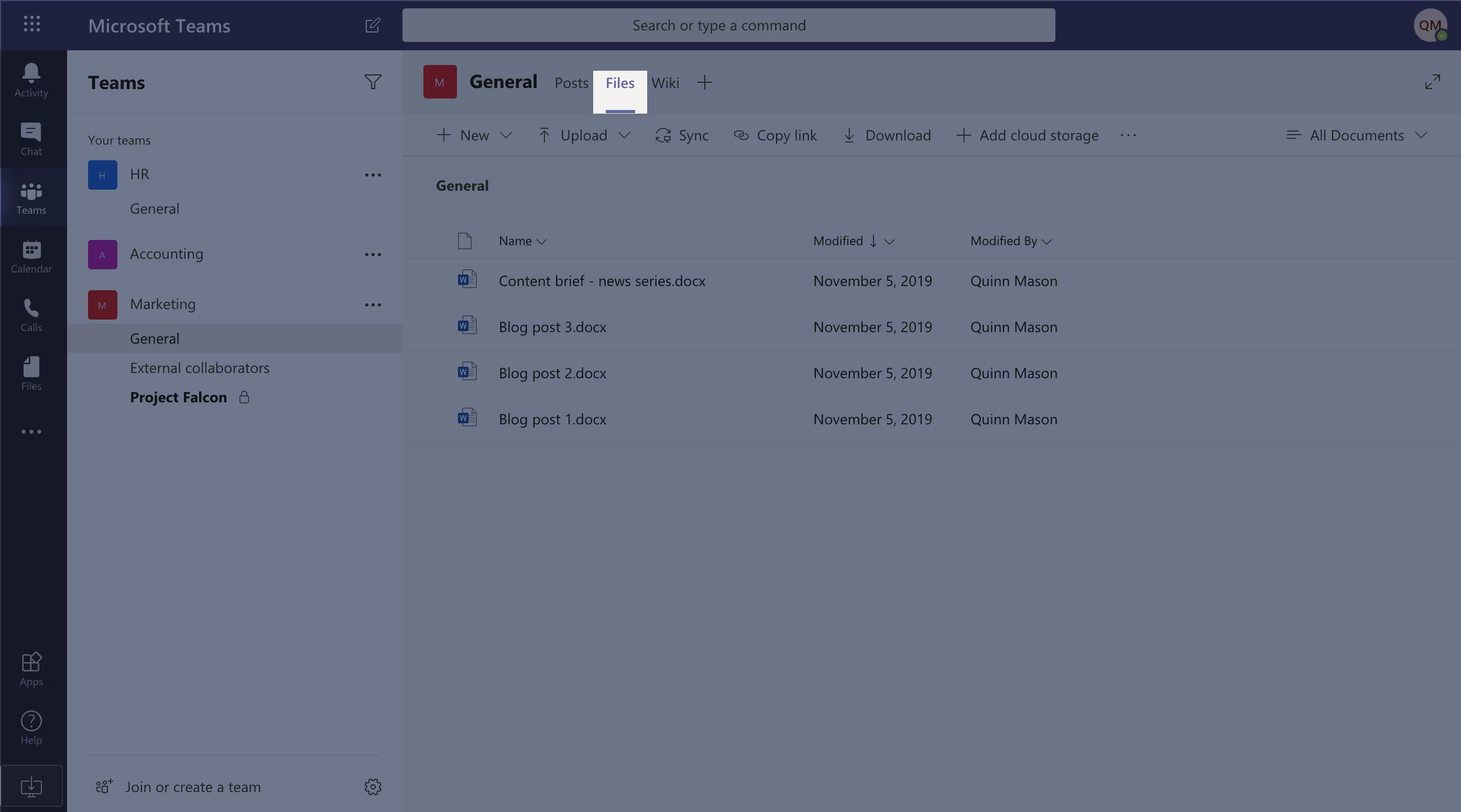
The most important thing to understand is that the content accessed through Teams—whether through the Files tab or shared via chat—is actually stored in SharePoint or OneDrive for Business.
Good to know:
- Microsoft Teams and SharePoint are united by an Office 365 group.
- Every time you create a new team in Teams, you also create a new Office 365 group, Calendar, Planner, and SharePoint team site.
- For every channel you create in Teams, a folder within a SharePoint document library is automatically created for you.
- When you click on the Files tab within a channel in Teams, the files you see are stored in a document library on a SharePoint team site.
If you don't have SharePoint Online enabled, Teams users won't always be able to share files within the app—the exception being if they're using one-on-one chat, in which case you'll need to have OneDrive for Business enabled.
Can we leverage our existing SharePoint infrastructure to create teams?
Yes, and we recommend that you do! But first you need to go from classic to modern SharePoint, and to go modern you're going to go flat.
That's because Microsoft Teams only works with top-level sites. If you already have SharePoint established and your infrastructure includes a lot of subsites, those subsites won't work with Teams. There is a way to logically restructure—with hub sites—but that happens on the SharePoint side of things.
With the modern SharePoint Online experience, it's easy to create a new team from an existing SharePoint team site.
Here's how:
- Navigate to the home page of the existing SharePoint team site and make sure it's set to private (this allows an Office 365 group to be assigned to it).
- You should see a Microsoft Teams icon in the bottom left corner of the screen. Click on Create a team.
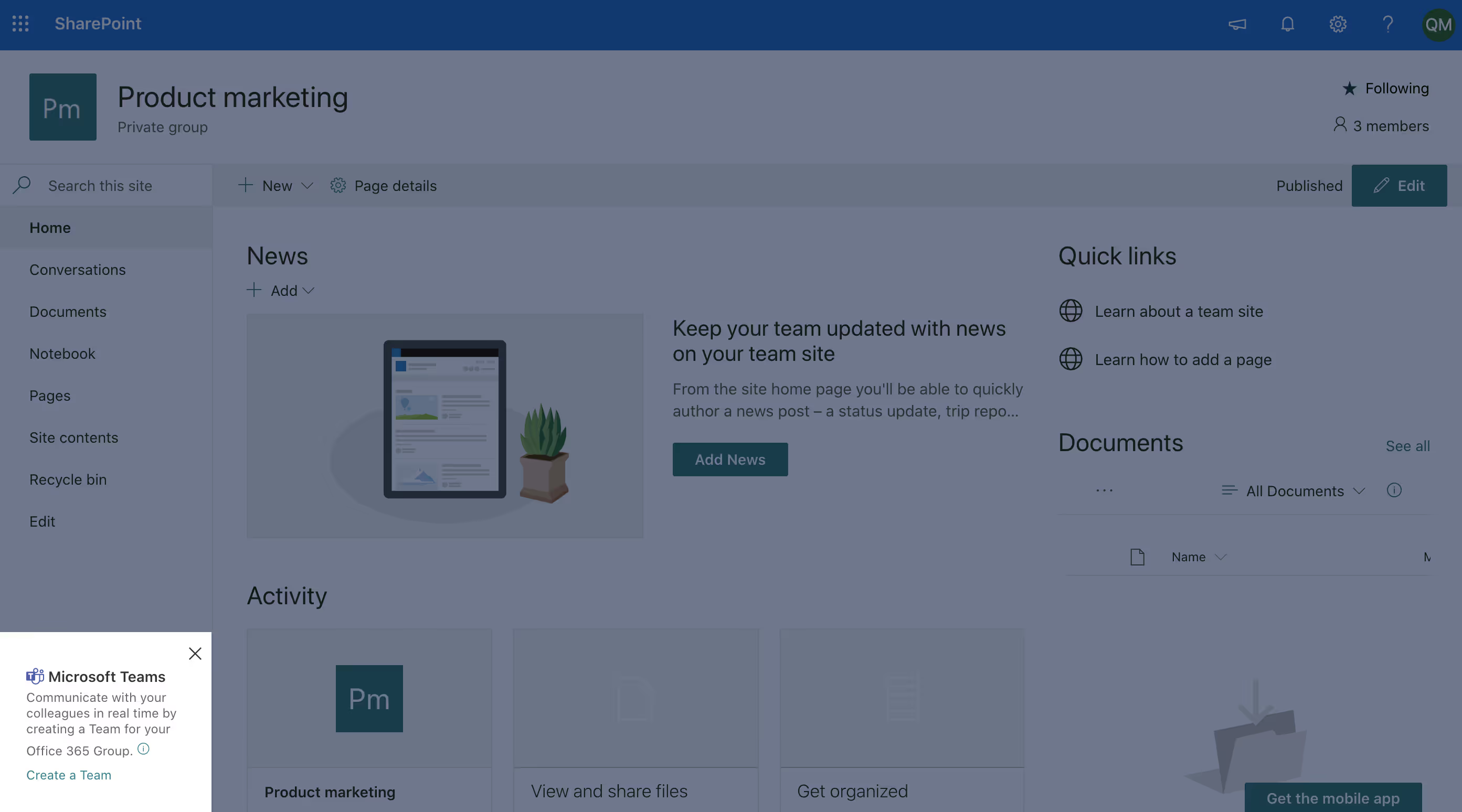
Once your team is created, a prompt should appear that says Success! Click here to go to your Team. Clicking on it will take you to the Teams app, where you'll be able to access content stored in the associated team site.
Creating a team from an existing SharePoint team site means that you're building on the resources you've already invested in, not starting over from scratch. This method can also help minimize the creation of duplicate and unnecessary teams.
You can find more details, along with best practices for deploying Teams when you already use SharePoint, in our blog article on Microsoft Teams and SharePoint integration.
What's the best way to schedule and keep track of meetings in Teams?
When you create a team in Microsoft Teams, it comes with a shared Outlook calendar.
In Outlook, you can view a team's shared calendar by selecting that team's name underneath Groups on the left-hand side:

Your calendar in Teams is connected to your Exchange calendar. So if you schedule a meeting in Outlook, it'll show up in Teams, and vice versa.

Schedule a meeting in Teams
There are a few ways you can schedule a meeting in Teams—which we recommend trying out because they integrate seamlessly with your current flow of work.
You can schedule a meeting:
- Directly in a chat: Book a meeting with everyone that's part of the chat by selecting the Schedule a meeting icon directly below the box where you type a new message.
- In your calendar: Schedule a meeting by going to your calendar (the Calendar icon on the left side of the app) and selecting New meeting in the top right corner.
When the scheduling form pops up, give your meeting a title, choose who you want to invite, and add any relevant details.
To invite people outside your organization, select Optional (to the right of where it says Add required attendees) and type the person's full email address, then select Invite. They'll get an email invite with a link to the meeting.

To make it a channel meeting, type the name of the channel(s) where it says Add channel.

Manage meeting settings in Teams
Admins can manage certain settings for meetings in Microsoft Teams through the Teams admin center (Meetings > Meeting settings).
If your users invite external users to take part in meetings, you might want to consider whether or not to allow anonymous users to join a meeting. You can control that setting by sliding the toggle next to Anonymous users can join a meeting.
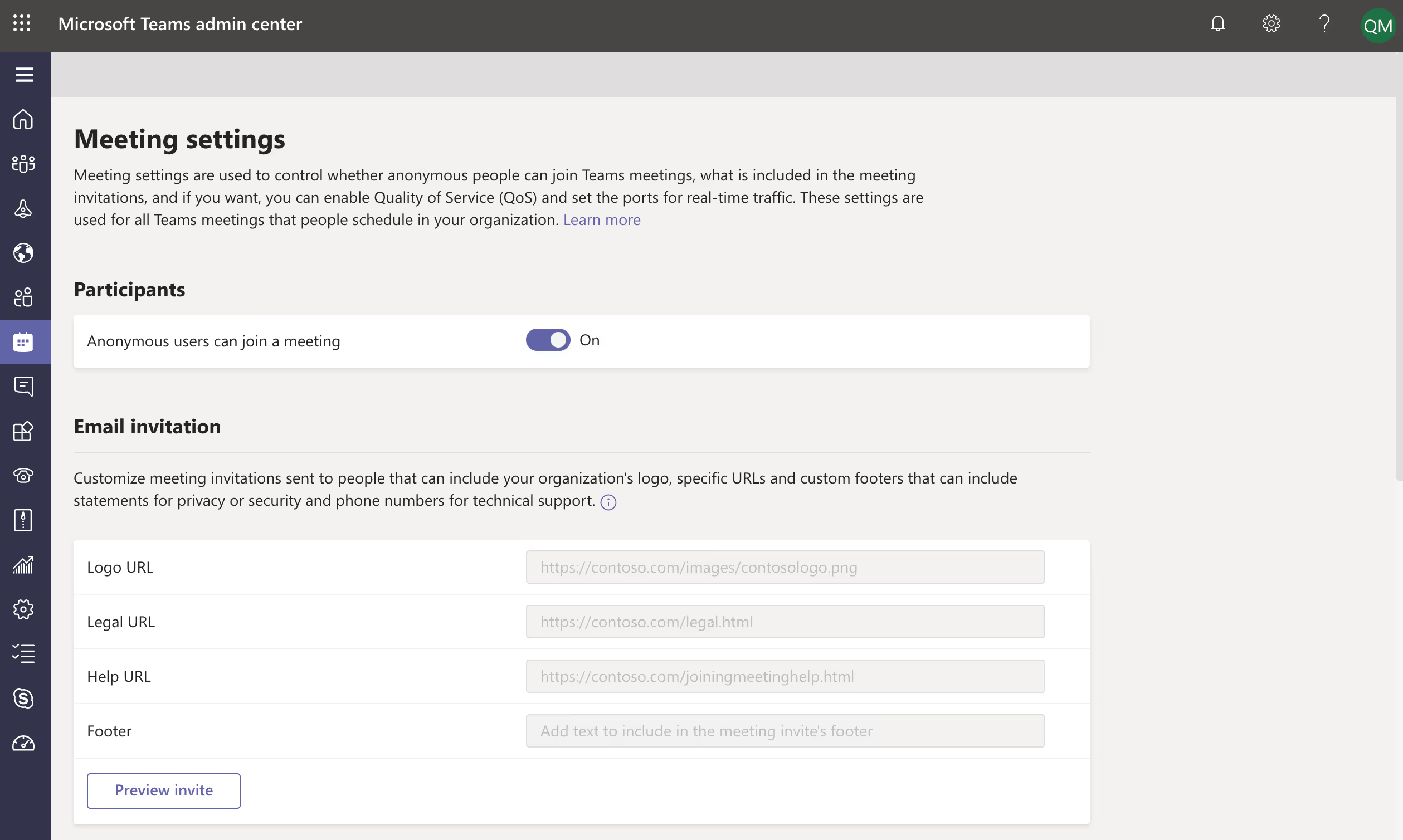
From here, you can also customize meeting invitations and set how you want to handle real-time media traffic for Teams meetings. For more info on meeting settings for Microsoft Teams, check out the official documentation.
🖥 Considering video conferencing software at large? Here's what you need to know about Zoom vs. Microsoft teams for your organization.
Can external users with guest access use Planner and other add-ons within Teams?
Yes! That's because when you add an external user to a team in Microsoft Teams, they're also added to your Azure AD.
External users with guest access to a team can participate in chats, channel conversations, and meetings, and they can access shared content if the right SharePoint settings are enabled. And they can also access Planner and other Office 365 service add-ons like Yammer.
Check out our blog post for more info on guest permissions.
Limit what a guest can do in a team
If you want to go the other way and limit what an external user with guest access in Teams can do, you can control the guest experience at several different authorization levels once guest access is enabled.
- Azure Active Directory: Guest access is governed at the highest level through Azure AD. From here, you can enable policies to control how external users can be invited into your tenant.
- Microsoft Teams organization level: Control specific features guests can access, such as:
- Calling: Do you want to allow your guests to make private calls?
- Meetings: Do you want to allow guests to use IP video, screen sharing mode, and/or Meet now?
- Messaging: Do you want to allow guests to chat, edit or delete sent messages, and/or use things like GIFs. and memes in conversation?
- Microsoft Teams individual team level: Admins and team owners can configure specific guest permissions, including. the ability to create and update channels, and delete channels.
For more details, and step-by-step instructions to configure guest access settings, head to our blog post.
Do the files exchanged in a private channel also go to a SharePoint folder?
Yes, but with one crucial difference: files from private channels aren't stored in a folder in the team's dedicated SharePoint site. Instead, every private channel gets its own dedicated SharePoint site.
Each time a private channel is created, a new SharePoint site collection is provisioned as well. These sites are created with a document library by default, and can be enhanced to a full-featured site collection. But they appear to be a totally unique site type—not a typical communication or team site—independent of the parent team's SharePoint site and managed by the Teams client.
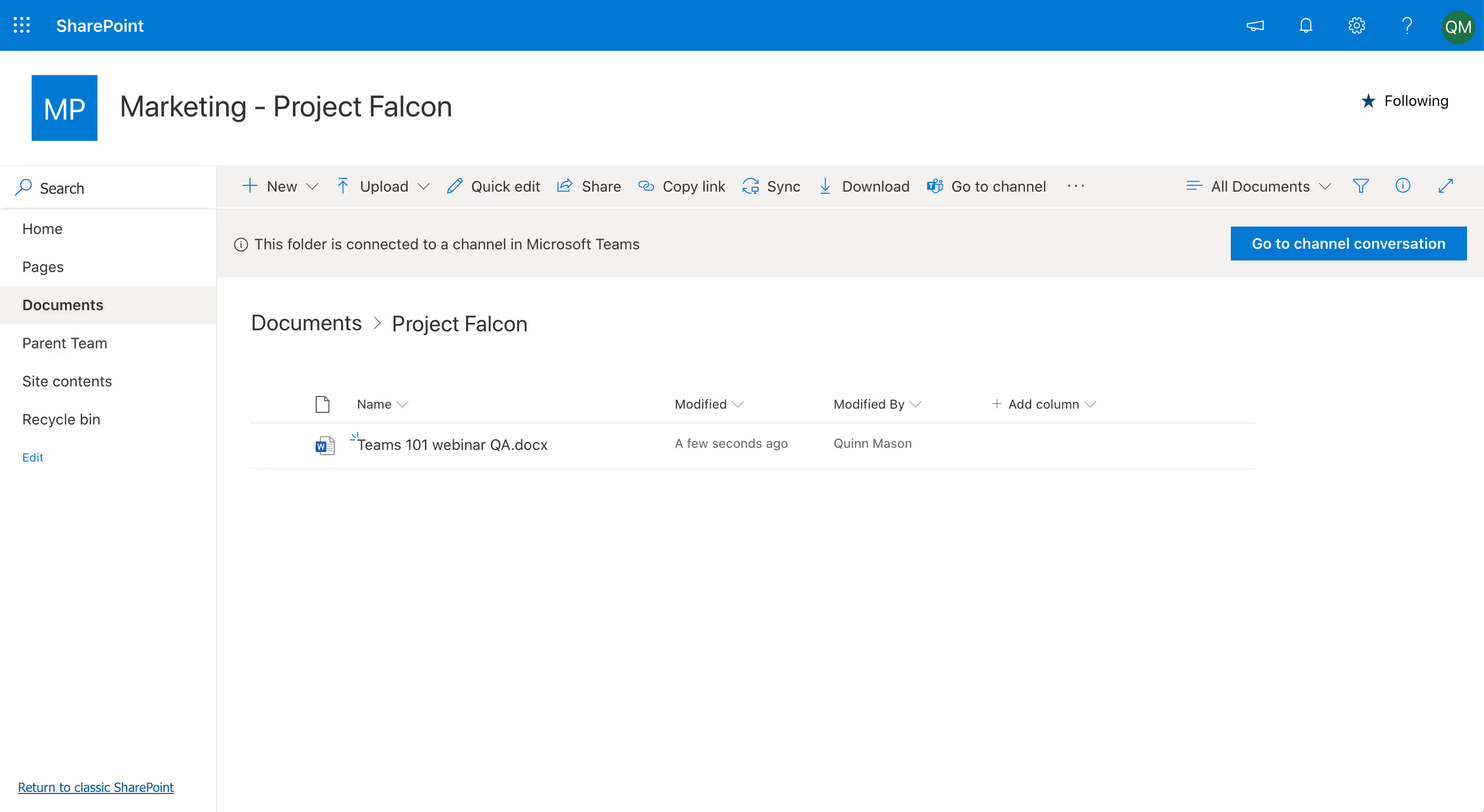
Whereas team owners have access to all the assets within the team site collection, only members of a private channel have access to its separate site collection—it won't even be visible in the SharePoint admin center.
Private channels are designed to be, well, private. Non-members won't know they exist, and team owners can only see the names of private channels in their team—they can't see a private channel's files, conversations, or member list unless they're a member as well.
Good to know:
- A private channel site collection syncs data classification and inherits guest access permissions from the parent team's site collection.
- Site collection Owner and Member groups membership are synced with the membership of the private channel in Teams. Changes to group membership made in SharePoint Online will automatically revert to private channel membership within four hours.
- Just like any other channel, private channels can be deleted. The big difference here is that the private channel's SharePoint site gets deleted, too.*
*If a private channel (or the team that contains it) is restored, its site collection is restored along with it. If a private channel site collection is restored past the 30-day soft-delete window for its private channel, it will just operate as a standalone site collection.
To illustrate the interaction between a Teams private channel and its SharePoint site collection, let's take a look at the following scenarios:
- A non-member needs to access a document. If certain users need to access documents without needing access to private channel messages, you can add them to the site's Visitors group (or to a new group that's separate from Owners and Members).
- The site collection is deleted outside of Teams. If a private channel's site collection is deleted outside of Teams, you can run a background job to restore the site within four hours as long as the channel is still active. If a site collection is deleted and hard-deleted, a new site collection is automatically provisioned for that private channel.
- All the members of a private channel leave the company.
If everyone that had access to a private channel suddenly leaves, the Teams admin and tenant global admin can always retrieve those files with Graph API and/or PowerShell.
You can find more details about managing the life cycle of private channels, along with step-by-step instructions, in the official Microsoft documentation.
My organization doesn't want to limit user capabilities. Any advice for best practices without turning off features?
We always recommend keeping self-service features in Office 365 turned on. Unnecessary friction can negatively impact adoption and cause users to turn to other unapproved tools. It's better to leverage the power of self-service to drive user adoption in productivity apps like Microsoft Teams.
But you still need a strategy in place to govern how Teams is used. Having the right settings and policies in place ensures that employees use the tools correctly and keeps sensitive data secure. Your best bet is to configure settings based on the needs of your organization. In Teams, you can actually control guest access settings at four different authorization levels.
You might also consider using a third-party governance tool to keep Teams under control without limiting productivity. ShareGate monitors your tenant and highlights ways to make it healthier based on the policies you've set.
I have a ShareGate subscription. How do I activate ShareGate?
Happy you asked! In case you hadn't heard, we're bringing together ShareGate and ShareGate into a single subscription—so that you have everything you need to be successful in the Microsoft cloud.
If you have an existing ShareGate license, ShareGate is now included in your subscription at no extra cost. You can activate your ShareGate account by signing up here. Make sure to have your ShareGate license key handy, you'll need it to complete your activation.
If you're not a ShareGate customer, you can request a formal pricing quote here—or jump right in and start your free 30-day trial.
.jpg)


.svg)
.avif)
%20(1).avif)



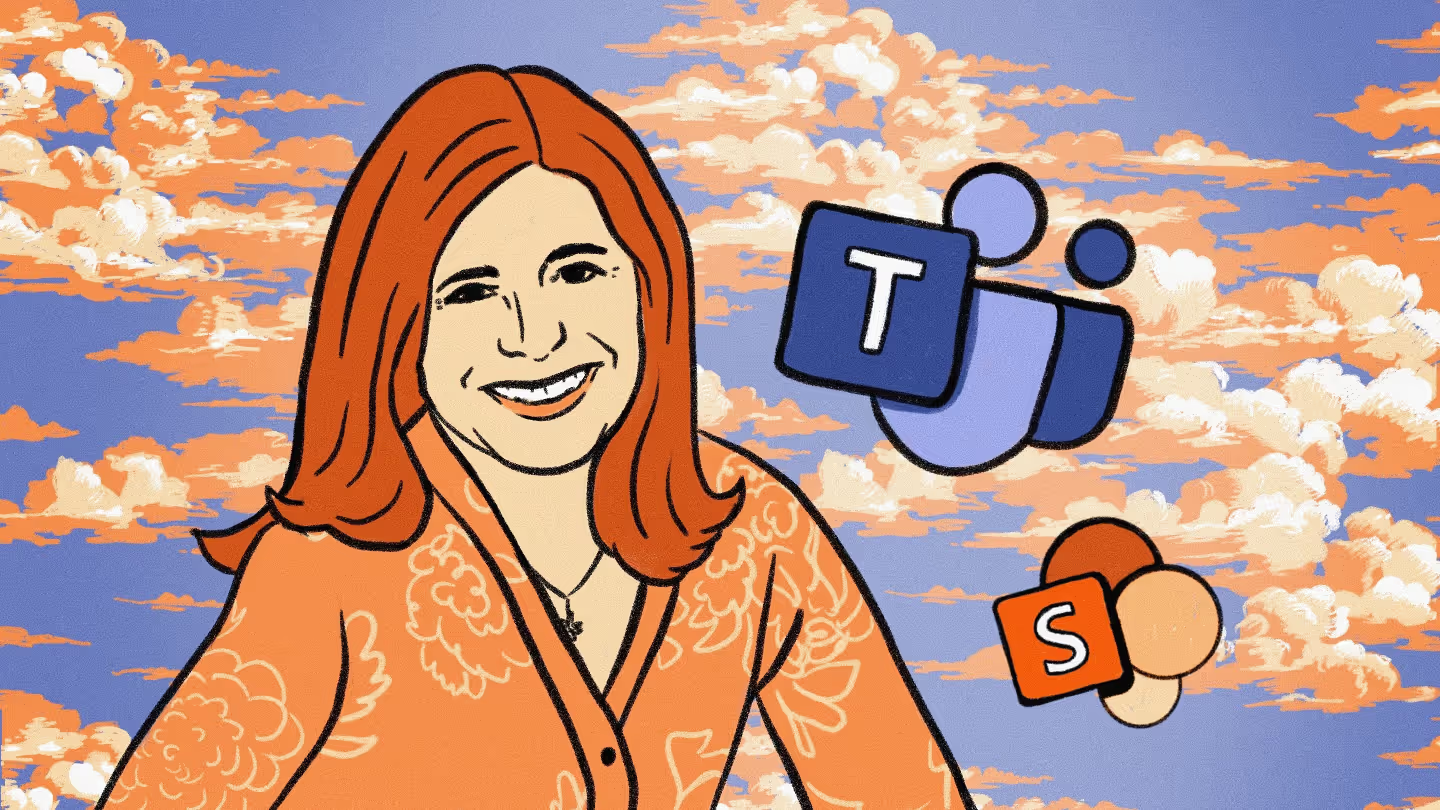



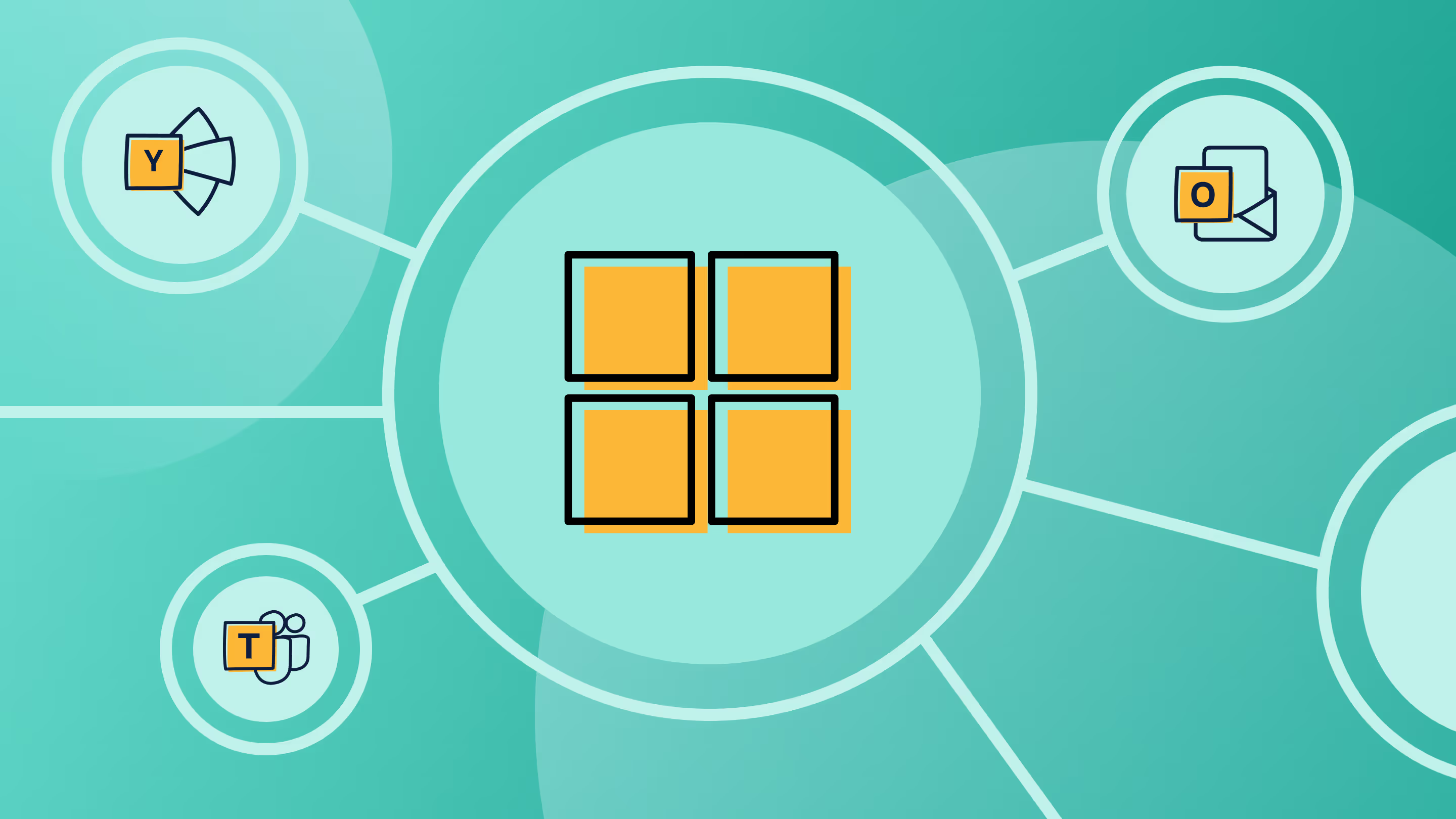

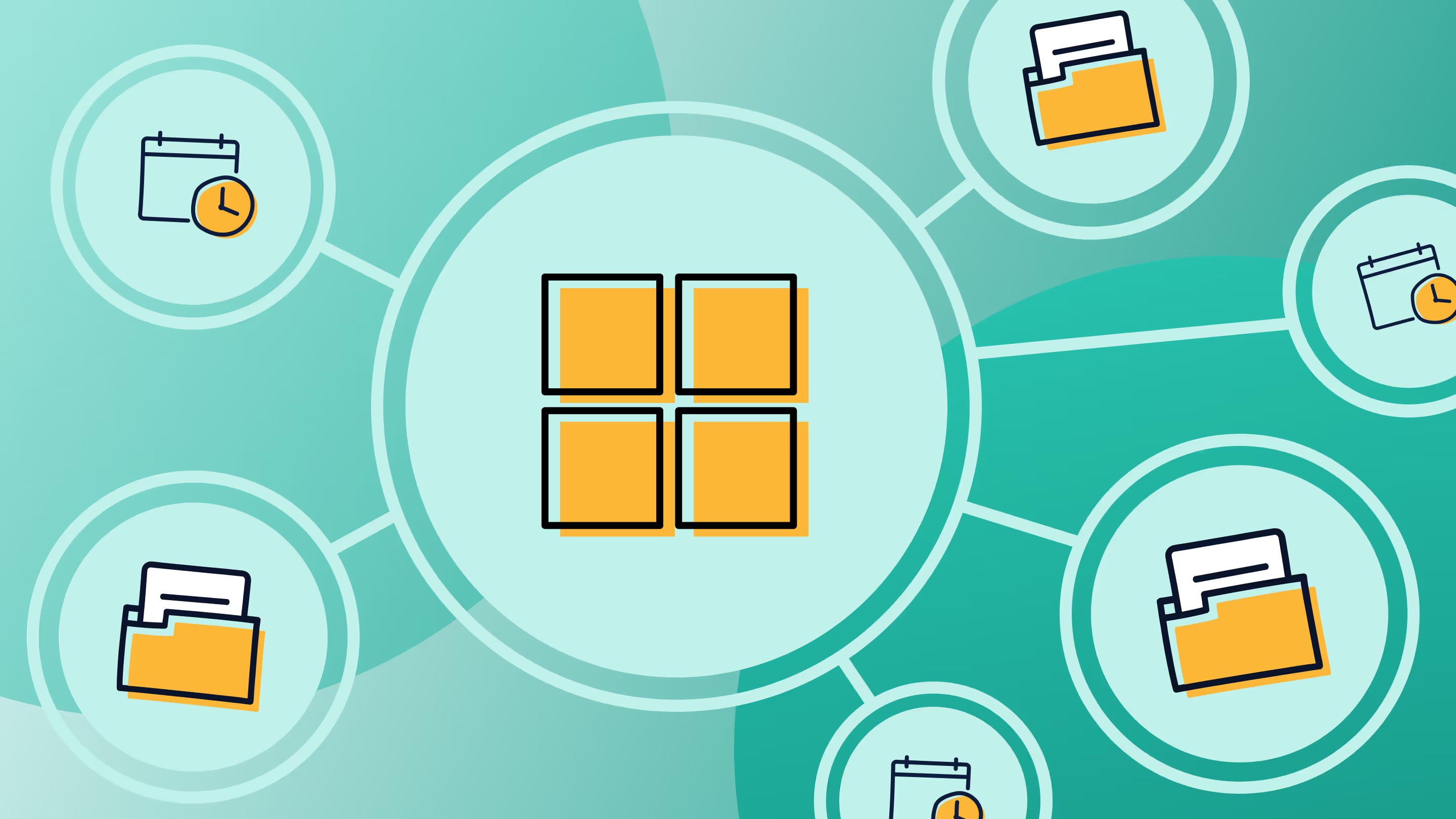


.jpg)


.png)

